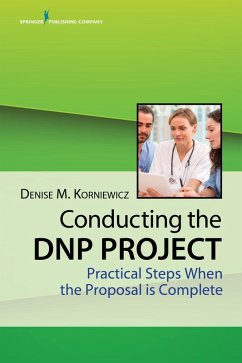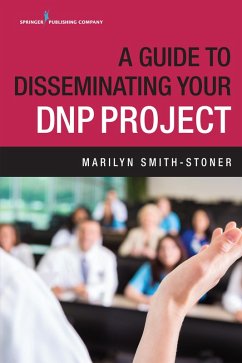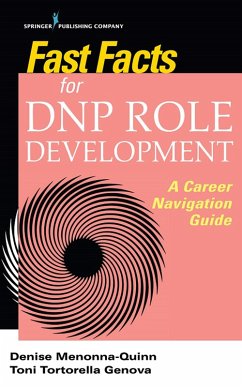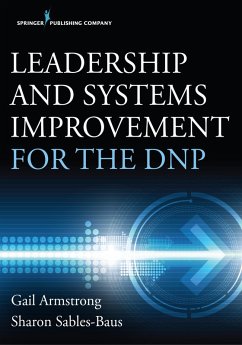
Practice-Based Clinical Inquiry in Nursing for DNP and PhD Research (eBook, ePUB)
Looking Beyond Traditional Methods
Redaktion: Bloch, Joan R.; Clark, Myra L.; Courtney, Maureen R.

PAYBACK Punkte
33 °P sammeln!
Meticulously compiled to serve the specific needs of APRNs and nurse executives engaged in doctoral-level research, this text provides evidence-based and practice-based scholarly methods not traditionally taught in PhD or DNP programs. Building on and expanding traditional nursing research methods, the book focuses on both existing and evolving methods of clinical inquiry, some of which incorporate technology and knowledge from other disciplines. These are approaches that can be translated into clinical practice, providing the nursing profession with unprecedented opportunities for collaborat...
Meticulously compiled to serve the specific needs of APRNs and nurse executives engaged in doctoral-level research, this text provides evidence-based and practice-based scholarly methods not traditionally taught in PhD or DNP programs. Building on and expanding traditional nursing research methods, the book focuses on both existing and evolving methods of clinical inquiry, some of which incorporate technology and knowledge from other disciplines. These are approaches that can be translated into clinical practice, providing the nursing profession with unprecedented opportunities for collaboration in improving health and health care systems. Methods include quality improvement, implementation science, logic models, program planning and evaluation, patient-engaged and community participatory research, dissemination research, big data, comparative effectiveness research, and systematic reviews.
Chapters provide clear guidance on why and how to use a particular method, and are consistently organized to enable a comparison and contrast of different approaches in order to select the one that best fits a particular research need. The text highlights the importance of each approach, and discusses why to use a particular method for doctoral nursing work. Chapters describe how to apply the method along with how to interpret findings and disseminate them. The description of each method concludes with examples from the published literature. Practical tips for impact and success in research and program proposals add further to the text's value.
Key Features:
Chapters provide clear guidance on why and how to use a particular method, and are consistently organized to enable a comparison and contrast of different approaches in order to select the one that best fits a particular research need. The text highlights the importance of each approach, and discusses why to use a particular method for doctoral nursing work. Chapters describe how to apply the method along with how to interpret findings and disseminate them. The description of each method concludes with examples from the published literature. Practical tips for impact and success in research and program proposals add further to the text's value.
Key Features:
- Presents research methods specifically for doctoral-level evidence-based and practice-based clinical research
- Describes interdisciplinary health care methodologies focused on evidence-based improvement in health care
- Offers practical information on why and how to use each method
- Provides examples of each method from published literature
- Written by experienced academic and practice scholars from across the U.S.
Dieser Download kann aus rechtlichen Gründen nur mit Rechnungsadresse in A, D ausgeliefert werden.













